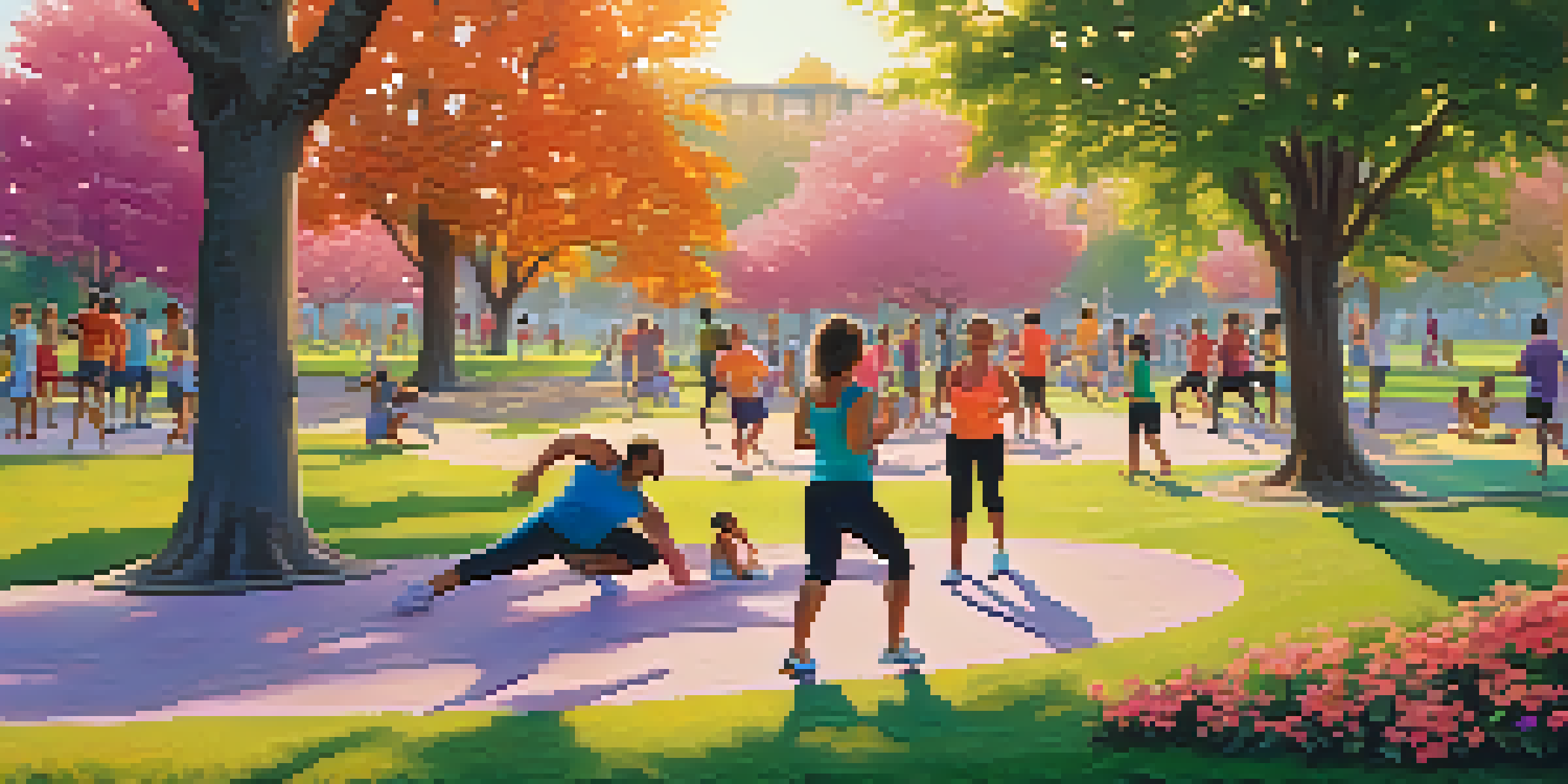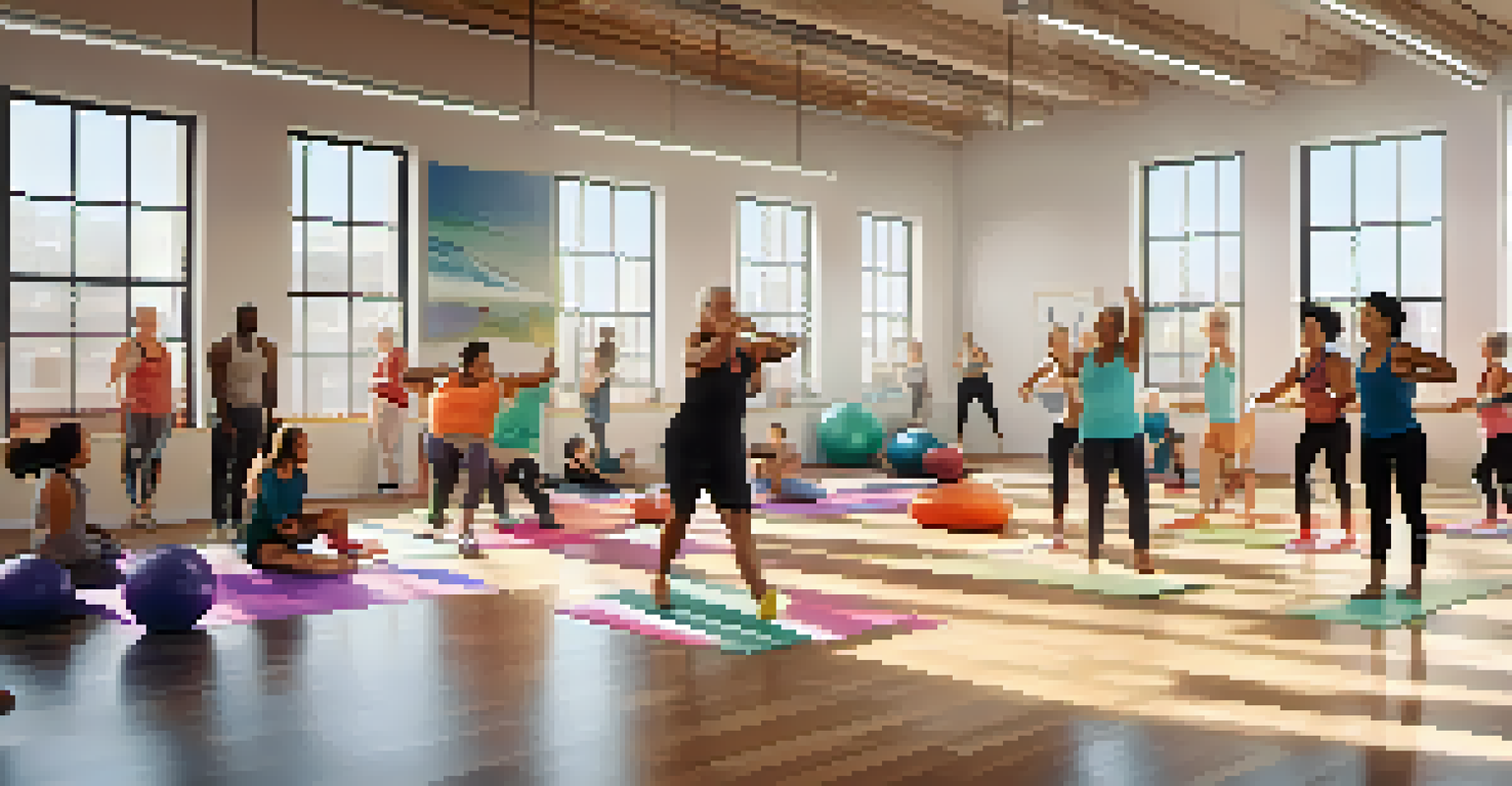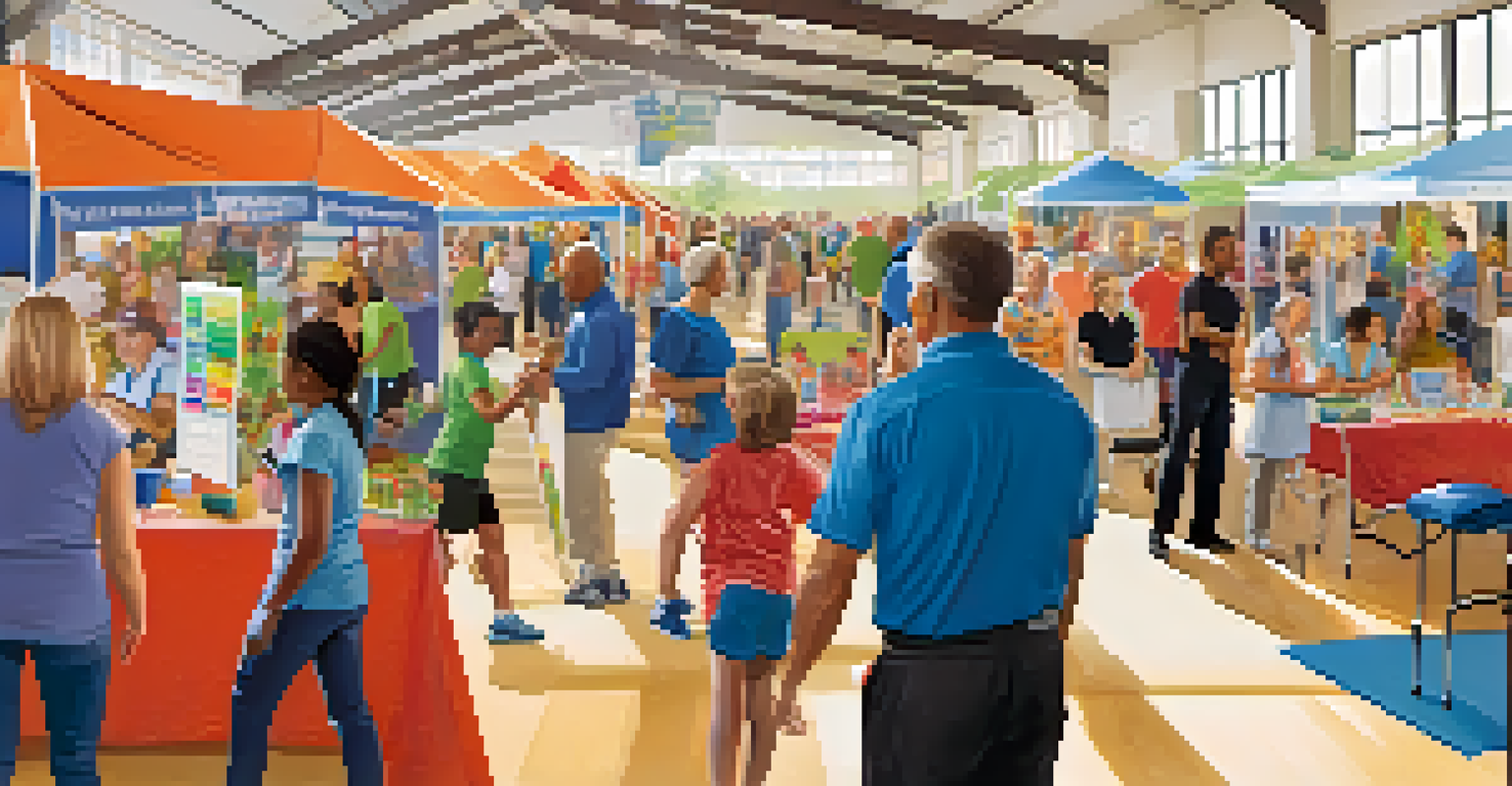Exploring the Benefits of Exercise as Medicine in Communities

Understanding Exercise as a Form of Medicine
Exercise is often viewed merely as a way to stay fit, but it can also be a powerful form of medicine. Just like we use medications to address health concerns, regular physical activity can significantly improve our overall well-being. This concept is referred to as 'exercise as medicine,' highlighting its role in preventing and managing various health issues.
Exercise is a celebration of what your body can do, not a punishment for what you ate.
Research shows that exercise can reduce the risk of chronic diseases such as heart disease, diabetes, and even some cancers. By incorporating physical activity into our daily routines, we not only enhance our physical health but also improve our mental clarity and emotional resilience. It's a holistic approach that recognizes the intertwined nature of body and mind.
Moreover, exercise can be tailored to individual needs, making it accessible for everyone, regardless of age or fitness level. From walking to yoga to strength training, the options are vast, allowing communities to find what works best for them. This personalized approach helps demystify exercise and encourages more people to engage in it.
The Role of Community in Promoting Active Lifestyles
Communities play a crucial role in fostering environments that promote active living. When neighborhoods offer safe parks, walking trails, and community fitness programs, residents are more inclined to participate in physical activities. This sense of community can create a supportive atmosphere where people motivate each other to stay active.

Additionally, social connections formed through group exercises or community sports can lead to lasting friendships and a sense of belonging. When individuals feel part of a group, they are more likely to stick with their exercise routines. This support network can make the journey of fitness less daunting and more enjoyable.
Exercise as Medicine Benefits All
Regular physical activity not only enhances physical health but also significantly improves mental well-being.
Communities that prioritize physical activity also tend to experience lower healthcare costs and improved quality of life. By investing in initiatives that encourage exercise, local governments can enhance the physical and mental health of their residents, ultimately leading to a happier, healthier population.
Barriers to Exercise in Communities and Overcoming Them
Despite the benefits of exercise, many individuals face barriers that prevent them from being active. Common obstacles include lack of time, limited access to facilities, and even feelings of intimidation in gym settings. It's essential to recognize these challenges and explore ways to overcome them to ensure everyone can enjoy the benefits of exercise.
Movement is a medicine for creating change in a person's physical, emotional, and mental states.
One effective solution is to promote low-barrier exercise options such as walking groups or community sports leagues. These initiatives can be organized in local parks or community centers, making them accessible to all. By creating a welcoming environment, individuals are more likely to participate and discover the joy of physical activity.
Education also plays a vital role in breaking down barriers. Offering workshops that inform residents about the importance of exercise and how to incorporate it into their daily lives can empower them to make healthier choices. When people understand that exercise can be adapted to fit their lifestyles, they are more likely to embrace it.
The Mental Health Benefits of Regular Exercise
Exercise is not just a physical endeavor; it has profound effects on mental health as well. Engaging in regular physical activity releases endorphins, often referred to as 'feel-good hormones,' which can help alleviate symptoms of anxiety and depression. This natural boost can make a significant difference in an individual's overall mental well-being.
Furthermore, exercise provides an excellent outlet for stress relief. Whether it's through a brisk walk or an intense workout, physical activity allows individuals to release pent-up energy and tension. This can lead to improved mood and better coping mechanisms in the face of life’s challenges.
Community Support Boosts Activity
A strong community network fosters environments that encourage individuals to engage in regular exercise.
Communities that recognize and promote the mental health benefits of exercise can create a supportive environment for residents. By offering mental health resources alongside fitness programs, local organizations can help individuals tackle both physical and mental health issues simultaneously, fostering a more holistic approach to wellness.
Creating Inclusive Fitness Programs for Everyone
Inclusivity in fitness programs is essential for ensuring that everyone feels welcome and able to participate. Tailoring activities to accommodate various abilities, ages, and backgrounds can help break down barriers that prevent individuals from engaging in exercise. This approach not only promotes diversity but also enriches the community as a whole.
For example, offering classes specifically designed for seniors, individuals with disabilities, or those new to exercise can help cater to varying needs. Additionally, incorporating different cultural activities, such as dance or martial arts, can appeal to a broader range of interests. This variety helps create an inviting atmosphere that encourages participation.
Moreover, community feedback is crucial in developing inclusive programs. Engaging residents in discussions about their needs and preferences can lead to more effective fitness initiatives. When people feel their voices are heard, they are more likely to engage with the programs offered, ultimately leading to a healthier community.
Collaboration Between Health Providers and Communities
The collaboration between healthcare providers and communities can amplify the benefits of exercise as medicine. By working together, they can create initiatives that promote physical activity and educate residents about its importance. Healthcare professionals can guide individuals on how to incorporate exercise into their treatment plans, emphasizing its role in enhancing overall health.
For instance, local clinics might offer exercise prescriptions, recommending specific activities based on the patient’s needs and circumstances. This approach not only empowers individuals to take charge of their health but also fosters a sense of accountability and motivation. Patients who receive support from both their healthcare providers and their communities are more likely to succeed in maintaining an active lifestyle.
Overcoming Barriers to Exercise
Identifying and addressing common obstacles to exercise can empower more individuals to embrace a healthier lifestyle.
Furthermore, hosting community health fairs that include exercise demonstrations and fitness challenges can spark interest in physical activity. These events can serve as a platform for sharing resources and building connections between residents and health professionals. By creating a culture that values exercise, communities can significantly improve the health outcomes of their residents.
Success Stories: Communities Thriving Through Exercise
Across the globe, many communities have successfully implemented exercise as medicine initiatives that have transformed lives. For example, a small town in California introduced a community-wide challenge to encourage residents to log their physical activity. This initiative not only increased participation in exercise but also fostered a sense of camaraderie among neighbors.
Such success stories are often fueled by grassroots organizations that prioritize health and wellness. These groups typically focus on creating accessible programs, building partnerships, and rallying community support. The ripple effect of these initiatives can lead to long-term improvements in public health, showcasing the power of collective action.

When communities come together to embrace exercise as a way to improve health, the benefits can be profound. From reducing healthcare costs to enhancing social bonds, the positive outcomes extend far beyond individual fitness, creating a thriving environment that promotes well-being for all.